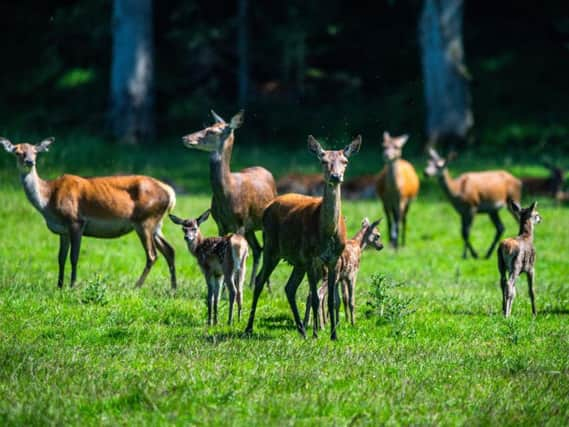Deer remain enchanting part of landscape at Harewood estate in Leeds


This one shows a herd of adults and young at the Harewood Estate in Leeds, a site which became home to a deer park during the medieval era.
Though numbers fluctuate, particularly when the calves are born around June, red deer are the most numerous species on the 4,000 acre site. There are thought to be around 150, accompanied by 45 fallow and 45 roe. But they are far from the only animals inhabiting the estate.
Advertisement
Hide AdAdvertisement
Hide AdIn recent years, greater emphasis has been placed on the creation of new habitats for game and wildlife and healthy populations currently include hare, foxes, badgers and a range of nesting birds as well as the wild deer.
The British Deer Society identifies six species of the mammal living freely in the British countryside. Red and roe deer are truly indigenous, native to the British Isles, whilst fallow deer, it says, were almost certainly introduced by the Normans.
Advertisement
Hide AdAdvertisement
Hide AdThe former is Britain’s largest land mammal and is a distinctive rusty red colour in summer, though its coat turns browner in winter. Roe deer share the similar rust-coloured coat during the summer months, but their coat varies in colouration depending on the season and habitat and is often a dull, slate-grey colour in the colder, winter months.
Much-loved world-famous deer Bambi was a roe deer in the original books, through his species was changed for the Disney film. Fallow deer, meanwhile, can often be distinguished by a distinctive black inverted horseshoe shape on their rumps and a black stripe on their tails.
They do have similarities though, not least that the males in each of the three species, known as stags or bucks, replace their antlers each year - and one thing they all share is their sense of majesty to the human eye.
Technical details: Camera Nikon D5, lens Nikon 300mm plus Nikon x2 teleconverter, shutter speed 1/1250sec, aperture, f/5.6, ISO 400.